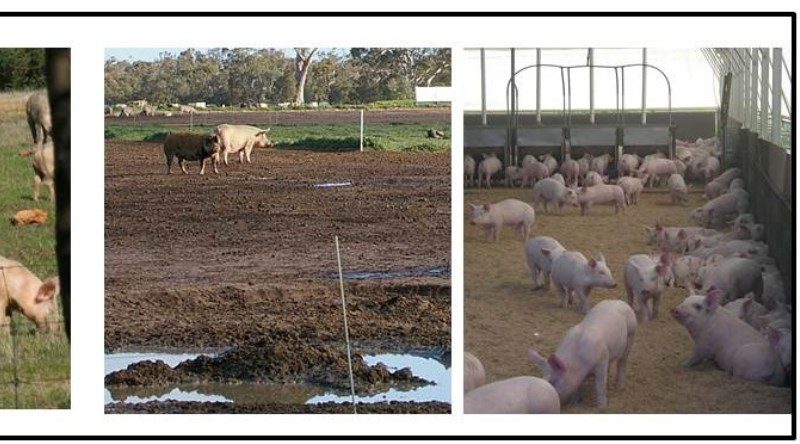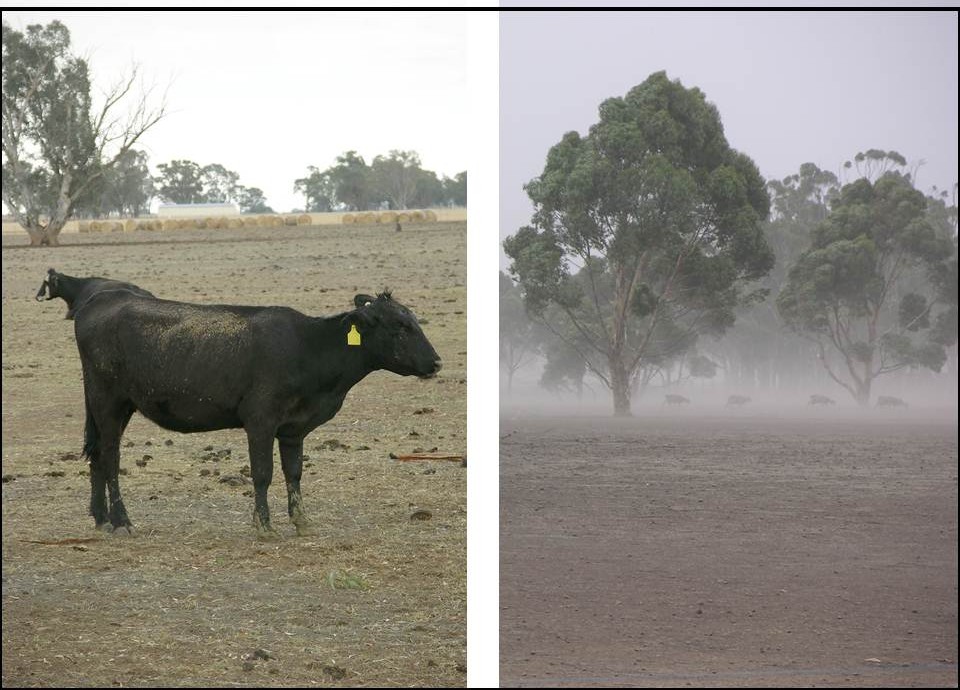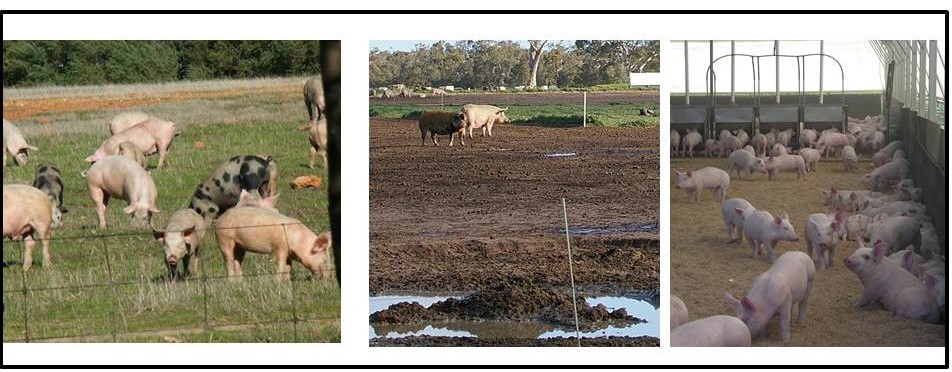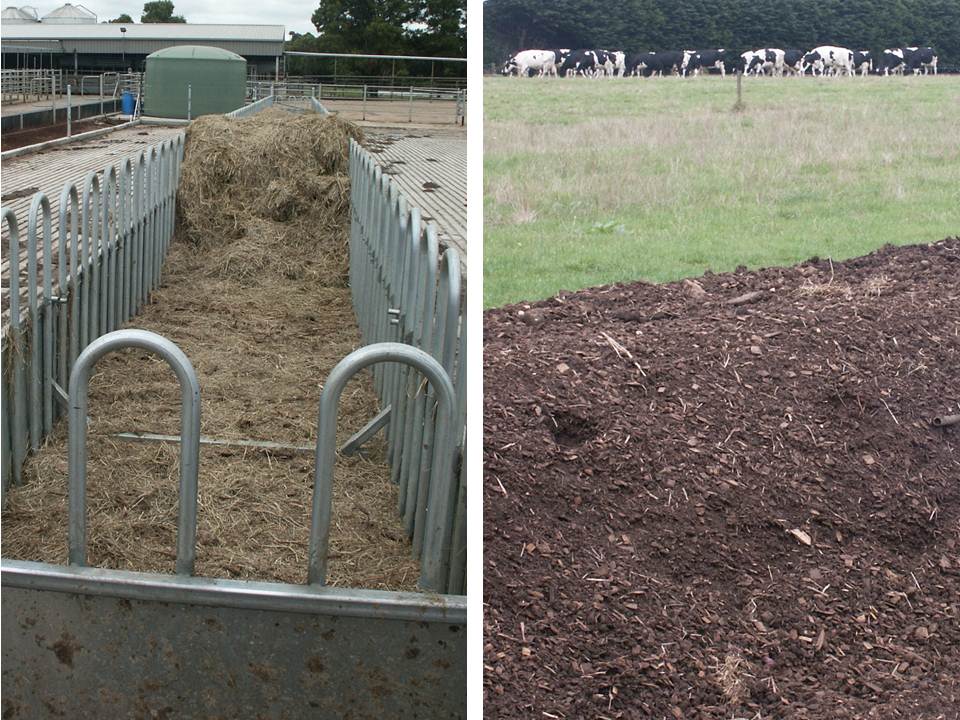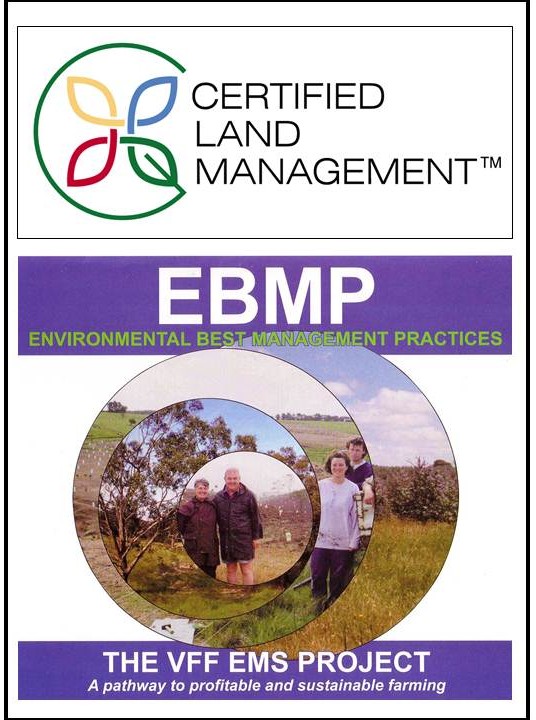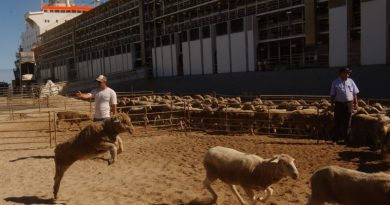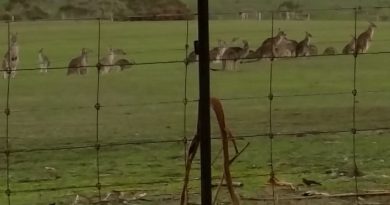Right to farm livestock requires holistic decision making by farmers and councils
By Patrick Francis
The current controversy in the right to farm debate over what constitutes “intensive” livestock farming is remarkable for the narrow or silo thinking displayed by negatively affected farmers as well local governments banning so called intensive businesses. It seems the councilors making decisions want or need strict definitions about what “intensive” means while some pasture farmers want unrestricted opportunity to livestock farming methods on their own land.
Neither party is being realistic. Livestock farming intensity is a relative term which should not be categorized by the percentage of daily feed intake which an animal eats. What is important about intensity are the outcomes associated with livestock health and welfare, outcomes for ecosystem functions across the farm concerned, and issues with feeding logistics and transport in the vicinity of the farm.
When viewed from this perspective, intensity fades into the background, while real issues relating to animal welfare, animal performance, environmental health across the farm, and consideration for others living nearby come to the fore.
By concentrating on definitions of intensive livestock feeding to make decisions about the appropriateness of a particular farming business, councilors lose sight of the issues which really matter across all farms irrespective of how intensive each one manages its livestock.
The evidence is also clear that across the agricultural zones of Australia, livestock farmers who don’t understand or appreciate animal health and welfare and ecosystem function, irrespective of production intensity, operate their businesses below best practice standards, in other words at different times of the year, livestock health and welfare is compromised and ecosystem functions degraded. Fortunately the percentage of farmers involved with negative outcomes is declining, particularly in the professional farm sector associated with cropping and livestock businesses.
That’s a result of increased emphasis on landcare and greater understanding that healthy soils and healthy pastures mean healthy animals, increased livestock productivity and greater consumer demand. Increased production of certified organic meats, and growing farmer participation in grass fed certified branded meat programs like Great Southern, Angus Pure and Cape Grim demonstrate this trend.
The same cannot be said in the lifestyle or part-time farming sector, which now compromises approximately 55% of Australia’s livestock farmers (ABS data defines a farmer as a person earing in excess of $5000 per year from livestock or crop sales). In this sector land degradation and animal welfare issues are not uncommon and are often associated with extensive livestock grazing, figure 1.
Figure 1: Land degradation and offsite impacts occurs in extensive livestock production when best management practice is not understood. Photos Patrick Francis.
Before making decisions about the appropriateness of higher intensity livestock farming, which in effect means providing animals with feed for maintenance and production above that obtained from grazing pasture, councilors would do well to examine some key facts about livestock agriculture. These include:
- Best practice grazing ensures paddock stocking rate always matches paddock carrying capacity, irrespective of monthly rainfall.
- Best practice grazing always ensures ecosystem function across paddocks is maintained and improving irrespective of monthly rainfall.
If these two points are adhered to then stocking density or intensity will not compromise animal welfare and health or the paddocks ecosystem functions. The latter requires that paddocks will:
- Have 100% soil cover with a combination of plant crowns and plant litter all year.
- Pastures will have a 50% or more content of perennial plants.
- Livestock will start grazing a paddock when herbage content is in excess of 2000 kg dry matter per hectare and will stop grazing and exit the paddock when pasture is eaten down to 1200 kg dry matter per hectare.
Adhering to these conditions allows for a wide spectrum of grazing intensity and livestock types to run on a farm, but each must be managed accordingly to achieve the acceptable outcomes. The challenge for those farming different livestock at different intensities is to manage their animals appropriately to meet these conditions and demonstrate in a transparent and credible way what outcomes are happening.
If they can’t do this then they need to adopt a different approach to ensure unacceptable outcomes are not imposed on neighbours, the local community and the local environment. It’s why a point is reached with pasture farming when too many animals of any species are inappropriate and housing or feedlots are introduced. And with these come specific regulations to ensure animal welfare and the environment are protected.
Tipping point for pastures
There is always a tipping point with livestock density, when pasture production can no longer maintain carrying capacity, animal welfare and ecosystem function. In other words the livestock become part of the degrading processes. That’s when farmers wishing to intensify need to introduce additional methodologies to support paddock ecosystem function.
The reality is farmers who intensify livestock production reach a point when they cannot have their “natural” methodology cake and eat it to. The intensification brings with it animal productivity and usually eating quality advantages, but losses out to some degree on being “natural” and/or “free range”.
It is not unreasonable for councils to refuse a permit for intensive animal feeding operations such as a beef cattle feedlot, and housed semi-housed pigs and poultry if the suite of issues associated with the environment, neighbours and local infrastructure such as road maintenance and traffic cannot be addressed to the satisfaction for all affected parties based on the understanding the business is conducted in a farming zone. The onus is on farmers who transition towards livestock intensity which is beyond paddock carrying capacity to credibly demonstrate their livestock and environment management to neighbours, council and consumers.
Figure 2: When livestock farmers intensify production by providing a total mixed ration in paddock feed bins or bunks, the higher stocking density can exceed carrying capacity leading to major soil and water degradation on and around the farm. Unless this can be prevented then housing using the appropriate code of practice is the only solution if a permit is provided. Photos: Patrick Francis
Many of Australia’s pasture based dairy farms provide an excellent example of how to do this when they build feed pads on which cattle are fed additional supplements each day in a confined environmentally managed area. After consuming their daily supplement the cows leave the pad and graze pasture in paddocks using a controlled rotation so that ecosystem function and pasture productivity is maintained.
This is a model that beef cattle farmers, who are aiming for a particular growth rate per day and carcase quality attributes such as high marbling scores, could consider using if pasture paddocks cannot support enough herbage to achieve the desired performance or have so many animals in a mob that allowing them access to pasture will cause paddock degradation. The feed pad method also overcomes the common problem of pasture substitution when large quantities of supplements are fed in feeders or bunks on pasture.
The feed pad principle is in effect used with free range poultry if chook-mobiles are equipped with feeders, so the bulk of the birds’ daily intake is provided in a mobile laying shed. The surrounding paddock pasture and soil becomes an additional but supplementary feed source. The chook-mobile is moved around and between paddocks to ensure an even spread of manure and prevent the birds overworking (eg dust bathing) any one area, so paddock ecosystem functions are looked after. A version of this system could be used with free range pigs but would be more difficult to implement given the enormous soil disturbance these animals can apply to a paddock if too long a time is spent in them.
Imported feeds a valuable soil nutrient resource
A significant advantage of feed pads/chook mobiles when managed appropriately in conjunction with pasture is that they can provide a win-win for the livestock and the paddock ecosystem function irrespective of grazing intensity. The reason is that if feed is purchased for livestock and fed on the pad or in the chook mobile, when animals leave the feeding area to graze, they take with them valuable manure which improves soil health and ecosystem functions in their paddocks.
Many dairy farms no longer need to purchase any fertilisers for spreading on paddocks as they introduce sufficient nutrient via the livestock feed which is subsequently spread as manure across their rotationally grazing pastures. (With feed pads all liquid manure runoff is collected in waste water dams for spray irrigation and solids collected for composting and is spread on pastures to improve soil health and plant nutrition.)
Figure 3: An increasing number of dairy farmers are building feed pads next to the milking barn on which cattle are fed supplements before returning to their pasture paddock to graze. All manure and waste feeds from the pad are stored on farm and used to produce compost which in turn is spread back on pasture to improve soil health and plant nutrition. Photos: Patrick Francis.
The difference between feed pad livestock management and adoption of confinement feeding in beef cattle or lamb feedlots, is that animals in the latter systems don’t graze pasture at all. Similarly intensive poultry and pig husbandry confine animals to sheds. Such intensive or confined methods of livestock husbandry do require specific regulations to ensure animal welfare and surrounding ecosystem functions are not adversely affected.
“Clayton’s” intensification
Farmers cannot expect councils to accept hybrid livestock production systems when they are being employed as a Clayton’s intensive feeding system. In other words raising beef cattle or lambs in so called pasture paddocks, where the majority of the daily intake is supplied in a ration. It’s the same for poultry and pig with ‘runs’ outside permanent sheds for some sort of “free range” authenticity. In both cases the pasture paddock becomes no more than a large pen in which stocking rates continuously exceeds pasture carrying capacity. This destroys herbage cover and leads to degrading processes associated with soil structure decline, wind and water soil erosion, water and manure runoff into ground water or surface water supplies, odour and possibly unnatural animal population increases, in particular birds.
Ruminants versus non-ruminants
But there is another component of the feeding intensity definition and right to farm which councils need to consider when reviewing permit applications for pigs and poultry. The use of a definition which defines intensive animal raising which means more than 50% of an animal’s daily diet is derived from off-farm sources can be misleading in relation to the health of farm ecosystem functions.
Poultry and pigs are simple stomached animals not ruminants, that means they don’t have the specialised stomachs (rumen and reticulum) that sheep, cattle, and goats have, which enables them to digest large quantities of fibrous pasture on which they will grow and reproduce depending on quality and availability. Poultry and pigs will eat some of these when browsing on pasture but also require and instinctively seek out concentrated forms of energy and protein in the form of seeds, insects, worms and even carrion to maintain normal health, growth and reproduction.
Their desire to eat such a wide range of foods including materials from the human food chain is one of the key historical reasons why poultry and pigs have adapted so well to living with humans across the world since farming began. When farmers feed grains and pellets it needs to be in excess of 50% of daily nutritional requirement as pasture will not sustain growth and reproduction. So feeding hens or pigs on pasture is not an indicator on its own of intensive animal production, rather it is farmers’ duty of care to provide the livestock with the appropriate and balanced diet they require.
Figure 4: When free range hens are rotationally grazed in pasture paddocks so that stocking rate matches carrying capacity and ecosystem function is maintained there is usually a win-win for animal welfare, productivity and the environment. The feed provided as grain or pellets to the hens becomes an asset for soil health and pasture growth when it is deposited across the paddock as manure. Photo: Patrick Francis
The issue for councils in most of these so called intensive animal feeding applications cases, is how will animal welfare and ecosystem functions be impacted by the proposed change in feeding practices, not what proportion of imported feed the livestock are being fed.
Horse farms should be included
The issue of livestock intensity versus ecosystem health is usually associated with farmers altering livestock numbers per unit area, it should also be addressed on horse farms where breeding and training is involved. This is particularly the case with horse farms where animals are confined (set stocked) in the same paddocks all year and fed the bulk of their diet as supplements.
Horses like other livestock can be fed the bulk of their diet as supplement while living in pasture paddocks, but their management needs to be undertaken secure in the knowledge that paddock ecosystem functions are being improved year round.
Environment management programs needed
To help councils and farmers reach a collaborative frame work which allows for increased livestock intensity while maintaining animal health and ecosystem function, third party and possibly audited environmental management systems need to be adopted. There is a generic farm Environment Best Management Practice program already in existence which was developed by the Victorian Department of Primary Industry and the Victorian Farmers Federation in the early 2000s. This program needs fine tuning as it was produced to apply across all farms and enterprises. It needs derivations for small farmers, organic farmers, livestock farmers and crop farmers (all with and without irrigation), otherwise users can spend hours on topics of no relevance.
Larger businesses which pose a significant challenge to the surrounding ecosystems and which claim environmental and animal welfare integrity for their branded foods would be wise to consider an even more comprehensive program, Certified Land Management, developed by the Australian Land Management Group. By adopting such a comprehensive and third party audited environment management program, councils and third parties such as neighbours would be secure in the knowledge that management is in place that protects and enhances the environment and animal welfare.
Figure 5: All livestock farmers should participate in a voluntary environmental management program. As intensification increases moving into a third party audited program is more important to ensure there are no unintended consequences for livestock health and welfare, ecosystem services, and neighbour hood amenity.
Take home message
The right to farm debate needs a far more holistic discussion than is currently being generated in the media, where individuals are point scoring using limited information. The issues need input from farmers, local governments, and three state government departments: planning, environment and agriculture. Regulations are unlikely to be satisfactory for all concerned in any contested right to farm event unless they allow the opportunity for all sides of an issue to be reported on and discussed using scientific analysis when needed.
Farmers also need to take a more responsible position if initiating right to farm cases and not hide behind generic methodologies with consumer appeal, such as “free range” and “pasture fed”, which they know are being manipulated with real or potential undesirable outcomes.
Councils involved in right to farm cases in farming zones need to upgrade their knowledge of agricultural and environmental sciences and instead of yes or no permissions allow for conciliation with farmers looking to intensify livestock production or who farm livestock which rely on imported feed for well-being and production. Farmers should be given the opportunity to demonstrate they can intensify production while looking after the environment and the amenity of their farms and adjacent farms and roads.
Councils need to be supportive of credible, best practice intensification in farming zones as it can insure farmers interested in that direction develop viable businesses especially if they can create niche paddock- to-plate value chains. Councils could also do more to ensure new land owners who purchase land in farming zones are informed about what livestock husbandry and environment management involves in their shires. Farming zones must remain just that and not be slowly converted into rural residential zones.

